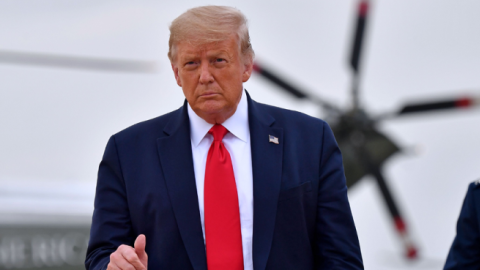Democrats and their media allies like to paint Donald Trump as a foreign-policy catastrophe. Even some conservatives have joined the angry chorus. Neocon stalwart Eliot Cohen, for example, has attacked Trump’s policies as “deeply misguided” and a strategic disaster.
The critics couldn’t be more wrong. The truth is, Trump has scored a series of foreign-policy and national-security successes, based on key principles we can call the “Trump Doctrine” — an approach sharply different from that of Presidents Barack Obama and George W. Bush but still rooted in longstanding American traditions.
First, the Trump Doctrine is about renewing American sovereignty. The president believes the primary actors in world affairs aren’t international organizations like the United Nations but nation-states Sovereign states are able to set the agenda because they control territory, population and borders. They pursue their interests by mobilizing their economic, political and military power. That applies to America as much to anyone else.
Second, protecting that sovereignty has led Team Trump to withdraw from multilateral agreements that limit US freedom of action, including economic action, such as the Paris climate accords, or that place it at a disadvantage to competitors such as China and Russia, such as the outmoded Intermediate-Range Nuclear Forces Treaty.
Even more crucially, the Trump Doctrine has identified China as the greatest threat not just to America but to the autonomy and sovereignty of countries around the world. Beijing’s effort to conceal the COVID-19 outbreak only confirms Trump’s intuition.
The same Trump Doctrine applies to the Kremlin regime Although critics blast Trump as being soft on Vladimir Putin, it was Trump, not Obama, who armed Ukraine with lethal weapons to resist Putin’s aggression; who ratcheted up economic sanctions against Russian leaders; and who withdrew from treaties that limited America’s ability to respond to sophisticated nuclear threats.
Finally, Trump used unilateral American action to cancel Obama’s flawed Iran nuclear deal, which paid the mullahs billions of dollars for a temporary delay in their nuclear-weapons program. Instead, he pushed Iran outside the world economy and has sought to contain it with a robust military cordon. He has also begun an overdue rebalancing of American forces from areas of less importance to our interests, such as the Middle East, and toward the rising economies of Asia.
What will the Trump Doctrine look like in a second term? Under the best scenario, Trump can leverage earlier successes with friends as well as foes to expand American influence without entangling us in quagmires. For example, Trump could build a new alliance to contain China by bringing new attention to the pandemic’s origins, Beijing’s human-rights abuses and its serial cyber theft. Europe and America could reach new agreements that curb or eliminate the Chinese Communist-serving company Huawei’s influence in the 5G sector and expand opportunities for Western firms.
A second term, moreover, would free Trump to shift more of NATO’s defense burden to its European members. While Europe can supply the ground forces for any conflict with a declining Russia, the United States can offer its dominance of air, sea, space and cyber and cooperate on developing advanced technologies such as autonomous systems and artificial intelligence.
In Asia, the Trump Doctrine can frame a more comprehensive security architecture to deter Beijing. Washington can lead in halting the Communist regime’s militarism in the South China Sea and in securing the strategic first-island chain running from Japan through Taiwan, the Philippines, Indonesia, Malaysia and Vietnam. The president can also encourage India, Japan and Australia to cooperate with the United States to create a free and open Indo-Pacific region.
In the Middle East, Trump could unify the growing opposition to Iran. He could promote the growing but still-nascent Israeli-Sunni alliance as the keystone of a new regional stability without the need for an American military presence.
Finally, in Latin America, Trump could reboot the Monroe Doctrine to force Chinese, Iranian and Russian footholds out of our backyard, while joining with our southern neighbors to promote economic growth and the rule of law — and to crush the drug cartels that have triggered the illegal-migrant crisis.
Pursuing these goals in his second term, should he win one, will only highlight the remarkable, and undervalued, successes of his first.



















